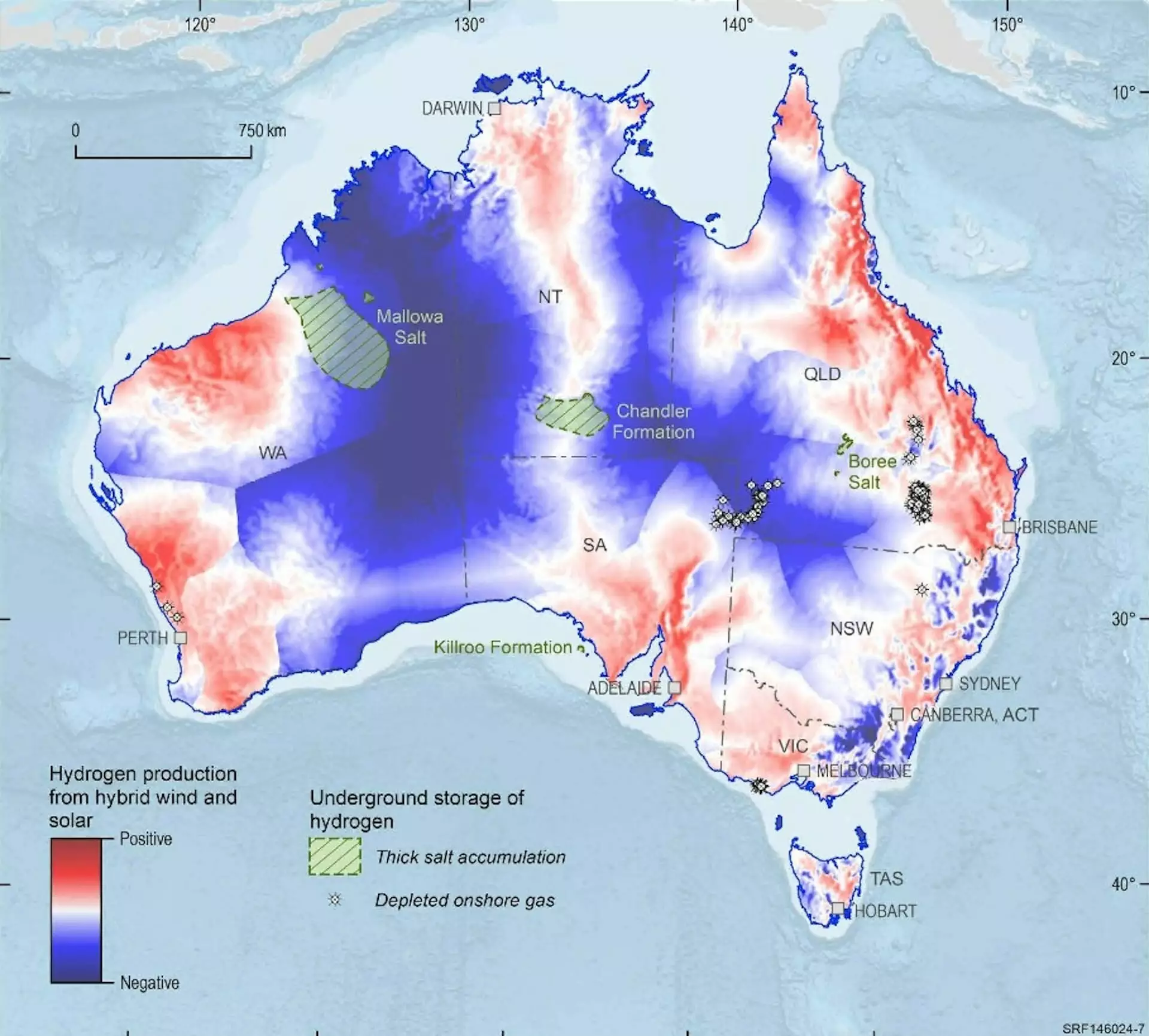Hydrogen has emerged as a cornerstone in Australia’s transition to a net-zero future, forming a pivotal part of the newly released National Hydrogen Strategy. This strategic document, unveiled by Federal Climate Change and Energy Minister Chris Bowen, aims to position Australia as a global front-runner in the emerging low-emissions technology sector. Hydrogen, recognized as the smallest and most abundant element in the universe, holds promise not just as a green alternative fuel but also as a key player in various industries, from steel manufacturing to fertilizer production. The ambition of producing hydrogen sustainably is not just environmentally altruistic but is viewed as essential for securing Australia’s economic future.
The updated strategy reflects changes in the global landscape since the initial framework introduced in 2019 by former Chief Scientist Alan Finkel. However, significant questions loom regarding the operationalization of this strategy and its alignment with existing policies. Overall, the new direction strives to clarify Australia’s global ambitions in hydrogen, but the potential pitfalls in execution remain a concern for stakeholders.
The ambitious targets laid out in the new strategy—500,000 metric tons of green hydrogen by 2030 and an astounding 15 million metric tons by 2050—serve as a blueprint for achieving large-scale production. Additionally, “stretch targets” of 1.5 million metric tons and 30 million metric tons by the same years emphasize the government’s intention to not only meet but exceed expectations. However, this raises the critical question of cost-effectiveness. The current price of green hydrogen production is higher than market acceptance, a challenge that the strategy aims to tackle by increasing supply chain efficiencies and fostering collaborations with new customers.
Moreover, the strategy acknowledges that simply setting production targets will not suffice; the effectiveness of these targets depends heavily on cohesive government policy and the willingness to adapt to technological advancements and market conditions. The overarching desire to establish a sustainable and competitive hydrogen market must be coupled with a robust plan for funding and investment, crucial for advancing hydrogen technologies.
The strategy identifies three key sectors—iron, alumina, and ammonia—where hydrogen’s potential can be effectively harnessed to establish new export industries. It also notes hydrogen’s role in reducing emissions in sectors like aviation and freight transportation. However, there is recognition of the limitations of hydrogen technology compared to more established alternatives such as battery-electric solutions for passenger vehicles. This recognition is significant as it indicates a refined approach to prioritizing hydrogen applications in sectors where it can uniquely contribute to emissions reductions and economic growth.
Nevertheless, the strategy lacks clarity on how these priorities will translate into real investment and infrastructure decisions. Questions abound regarding the distribution of funding and the criteria for selecting projects that deserve governmental support. Without clear parameters, investors may find it challenging to navigate the hydrogen landscape in Australia.
The earlier strategy placed significant emphasis on exporting liquid hydrogen, initially targeting markets in Japan and South Korea. However, the changing dynamics, including increasing interest from European nations, redefine the export landscape. A recent collaboration between Australia and Germany to secure a significant investment in hydrogen highlights the evolving market relationships. Nonetheless, the challenges of transport and safety related to hydrogen remain pertinent. As the strategy develops, a balance must be struck between fostering domestic hydrogen technologies and pursuing export opportunities.
Another vital aspect of the strategy focuses on ensuring community acceptance, particularly concerning safety and environmental impacts. Incorporating the voices of First Nations people and establishing transparent protocols around water usage reflect a movement toward more inclusive and steady governance of hydrogen initiatives. Still, the challenge remains of ensuring measurable outcomes for these commitments.
The National Hydrogen Strategy features an array of financial incentives, such as the Hydrogen Headstart grants program and tax credits for producers. However, concerns exist about whether such incentives will effectively target priority sectors or support technologies that might ultimately be deemed inefficient. The duration of these credits also presents a risk, as they are only available for a decade, potentially leading to investments in projects that may not mature into sustainable solutions.
The strategy is set for a review in 2029, a decision that underscores the necessity for ongoing evaluation and adjustment. Success indicators, including the emergence of large-scale hydrogen projects and long-term contracts with buyers, will be crucial metrics in assessing the strategy’s efficacy. If Australia fails to cultivate a burgeoning hydrogen sector within the next decade, it may need to recalibrate its strategies to align with market realities.
While Australia’s new National Hydrogen Strategy outlines a compelling vision for a sustainable and prosperous future, its success hinges on clarity, calculated policy decisions, and the ability to adapt to an evolving global energy landscape.


Leave a Reply